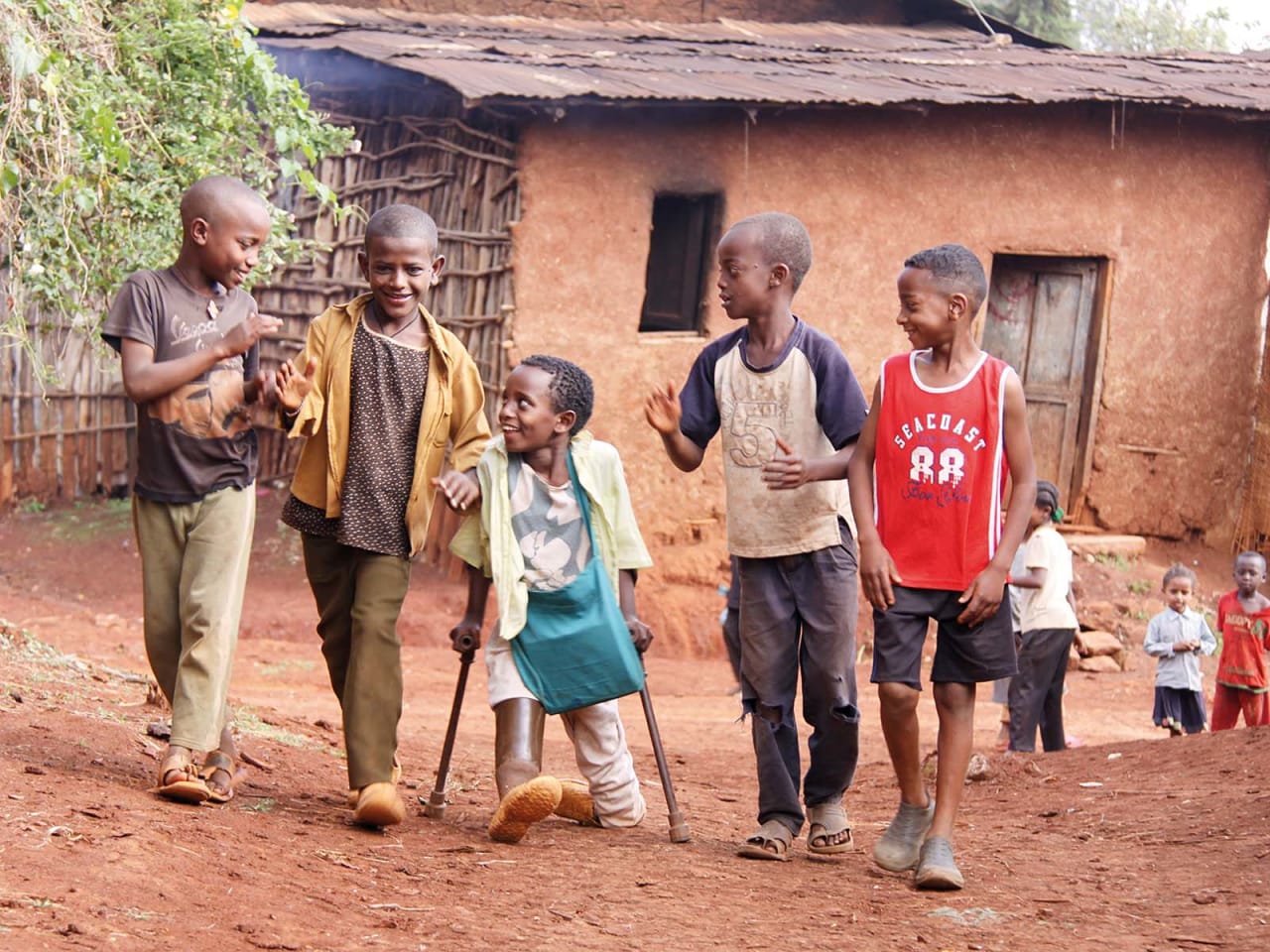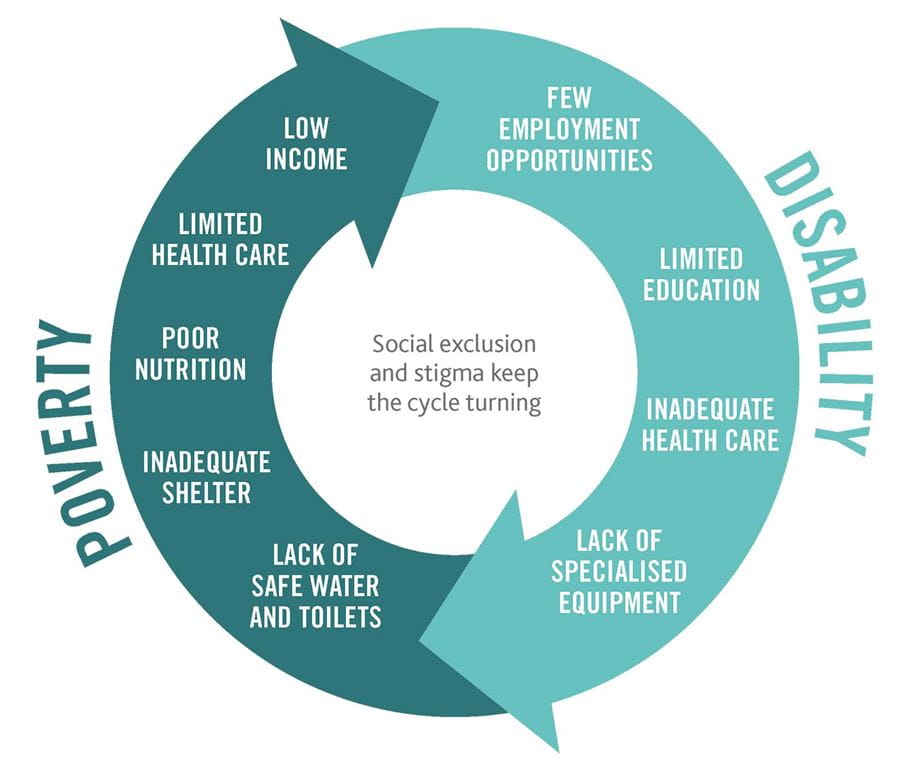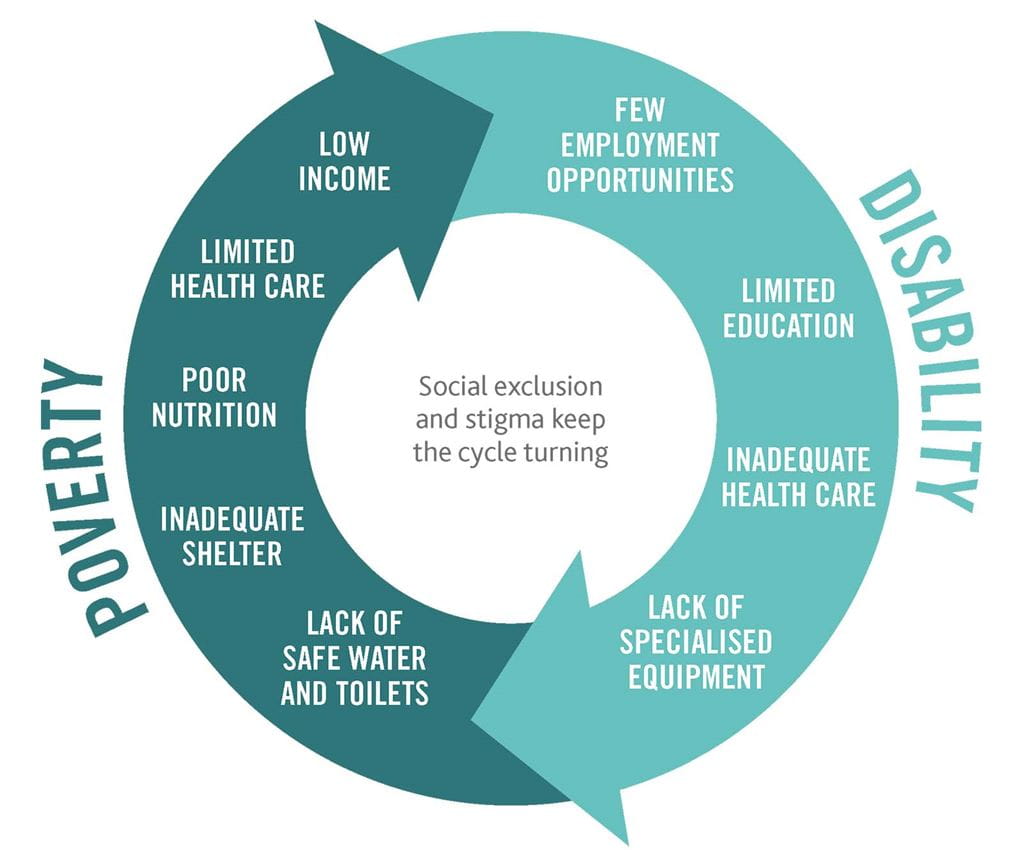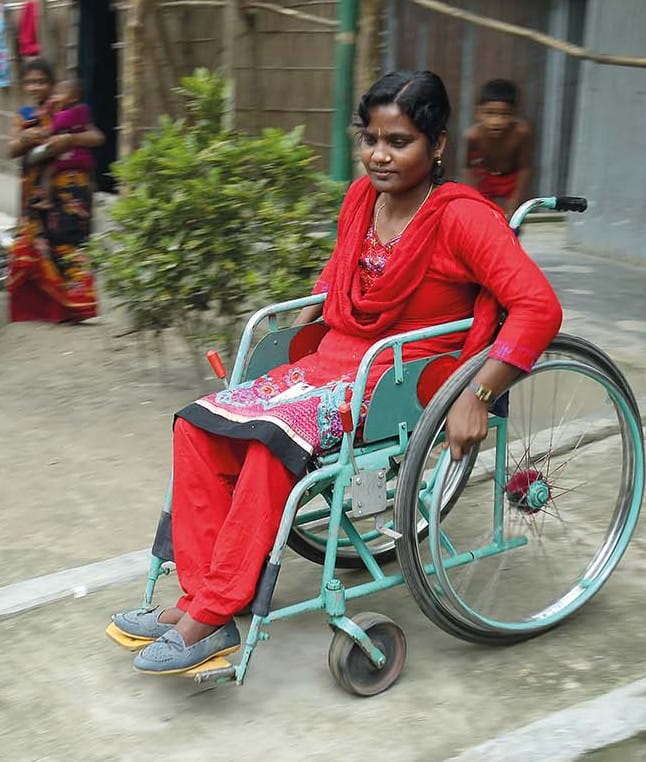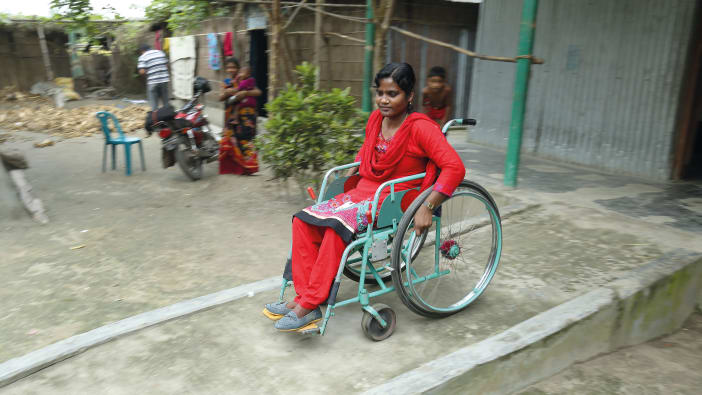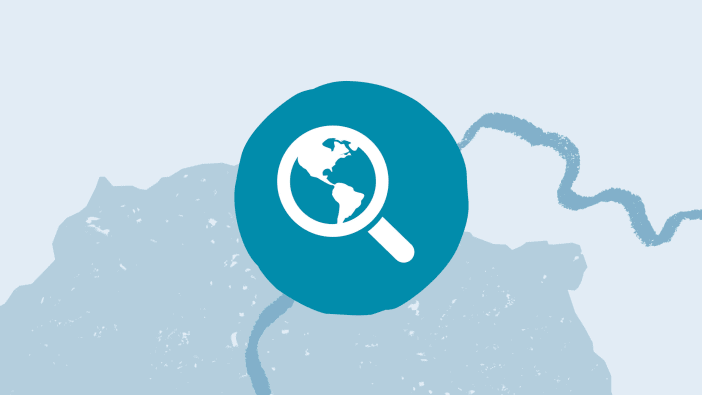Kazol Rekha lives in a small village in a flood-prone area in Bangladesh. When she was young her parents died, one shortly after the other. Her brothers looked after her and arranged her marriage.
But then, more tragedy. She fell off a chair and damaged her spinal cord leaving her unable to walk. Her husband left her and remarried, and her family changed their attitude towards her.
Kazol says, ‘Previously I was treated with affection by everyone in my family, but that all changed after the accident. I was neglected and I became a burden. It was difficult and painful. I suffered a lot.’
Everybody expected her to stay a burden, an extra mouth to feed, and nobody thought she could contribute in any way to her family and community.
The vicious cycle
One in every seven people has some kind of disability. And most – 80 per cent – live in low- and middle- income countries.
This is because disability and poverty are closely linked in what is often called a ‘vicious cycle’. This means that people living in poverty are more likely to become disabled, and people with disabilities are more likely to be poor.
Disability as a consequence of poverty
Inadequate shelter, unhygienic living conditions, malnutrition, lack of sanitation and unsafe drinking water – combined with poor access to health care – are all leading causes of disability. So communities that have high levels of poverty are also likely to have high rates of disability.
Disability as a cause of poverty
Many children and adults with disabilities have limited opportunities to go to school, work for a living, enjoy family life and participate as equals in society. Often this is not because of their impairment, but because of the stigma and discrimination they face. In many cases their voices are not heard and their needs are overlooked. They may also face additional costs such as specialised health care and equipment, further increasing the risk of poverty for them and their families.


